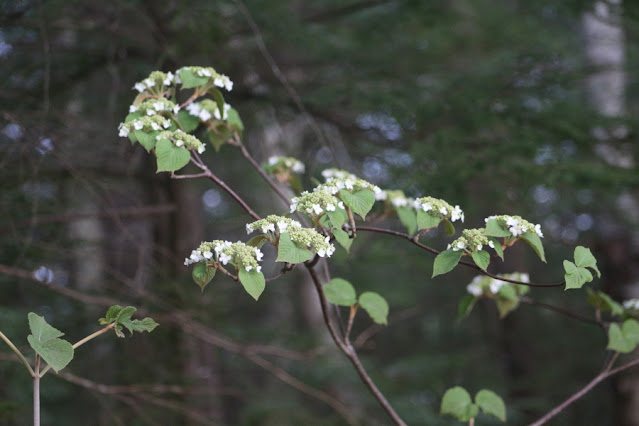The procession of song bird migration to New England is running at full speed right now as an explosion of insects bursts out all around us. I've already had the pleasure of the first swarm of black flies dive-bombing my eyes and buzzing like chainsaws as they probe my ear canals. As much as I may despise these annoying creatures, they are what allow so many of our animals to survive, from song birds to trout, and this week a large flock of yellow-rumped warblers arrived at the lake to gorge on the plentiful feast, hungry from their long travel up from the south. We counted about 15 of them, but there were certainly many more on either side of our field of view. They would perch momentarily on a tree branch, a railing, or a dock post before flitting off to snag a tiny, tasty morsel.
 |
| Yellow-rumped warbler (Setophaga coronata) |
These warblers have a distinctively different attack method than the eastern phoebe. The phoebes seem to jet out on a direct path to their target, snatch it immediately at full speed, then circle right back to their observation post where they wait for their next victim. They will occasionally make a minor flight adjustment right at the point of attack and sometimes have a little twitch of their wings, but in general they are very efficient. In contrast, these warblers spent a lot time suspended in the air with their wings fluttering madly as they maneuvered to grasp their prey. Their flight path is still fast and unpredictable enough that I was unable to catch any action pictures at all.
I considered whether the difference in the two birds' behavior is due to going after different insects but what from what I could find, they have the same target food. Furthermore, both species were feeding together in the same location at the same time (and tolerating each other just fine) so perhaps it's just that the phoebe has much better flight planning and targeting skills.
 |
| An Eastern phoebe stalks its prey amongst the maple blossoms. |
At least some of the warbler flock made its way over to the western side of the lake as Marge Thorpe observed them reducing the bug population over there. She took some great pictures, then she and Dave did some research, and noting there are two subspecies of yellow-rumped warblers, determined these are the "Myrtle" subspecies, identified by the white throat.
 |
| A good look at the white throat of the Myrtle subspecies. Photo by Marge Thorpe |
These populate the east coast, while the "Audubon" subspecies, which has a yellow throat, live on the west coast. In areas where the two subspecies overlap such as in the Canadian Rockies, intermediate forms of the bird occur. [Ref: Cornell Ornithology Lab.]
 |
| "Who you lookin' at?" Photo by Marge Thorpe |
We also had a visit from mother deer and junior recently, but it was bittersweet because there was only one of the two siblings we watched all last summer.
I'm afraid the other sibling met its demise this past winter, and was in fact the source of the remains I found on the lake back in early March (see March 7, 2021). The remaining yearling looks pretty small and weak; I assumed the coyotes took advantage of its sibling's weakened winter condition, but it's also possible the deer died of its own accord and the coyotes just cleaned up the remains.Then, just this morning, in the early light of day, I came upon the two of them munching away on my favorite hobblebush shrub, which being out in the middle of the woods, they are welcome to enjoy, and enjoy they did, decimating all the fresh, tasty blossoms below chest level.
 |
| There won't be any berries for the birds from this viburnum bush. |
Once they saw me they were off into the thick woods with five quick bounds, but they didn't go far, stopping to look back at me to watch where I was going.
 |
| "Can I please finish my breakfast?" |
I expect they'll be back shortly to finish off the higher branches.
 |
| Deer dessert. |
At least the flowers are going to a good cause, fueling the new fawns growing in momma's belly.
On another happy note, wildflower season is ramping up; now is the time to be on the lookout for trillium - I had a report from Canterbury (thanks GP!) that painted trillium are blooming there, just a bit south of the Lakes Region, so they should be out here soon.
 |
| Painted trillium blooming in Canterbury. Photo by Glen Powell |
The spring wildflowers compete with the trees for our attention during the spring foliage season which is highlighted by red maple blossoms in the upper story and blueberry buds down by the waters edge.
 |
| Red maples shine up high |
 |
| While blueberry bushes gleam down below. |
Both are not only pretty but also welcome hints of what's to come.
Note that in addition to the black flies and other flying pests, crawling ticks are also on the prowl; I've found both black legged (deer) ticks and wood ticks creeping up my legs even after following anti-tick measures, so do a good tick-check after your outdoor adventures.
And thank those yellow-rumped warblers for doing their part in the battle of the bugs!



No comments:
Post a Comment